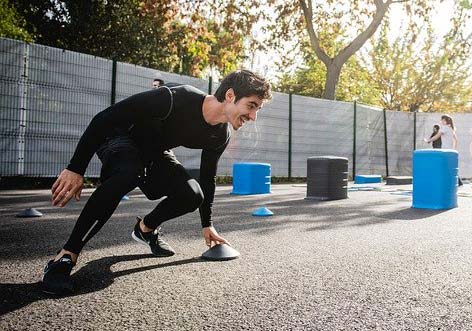
What is cardio? Simply put, cardio (also called cardiovascular training) is an activity that raises your heart and breathing rates and also improves the function of your heart, lungs, and respiratory system. When defining exactly what cardio is, it’s important to remember that just about any physical activity raises your heart rate. So, for an activity to qualify fully as cardio, it has to meet both the criteria of raising heart/breathing rates AND improving the function of your heart, lungs and respiratory system.
Types of Cardio Exercises
There are many different types of cardio exercises, but some of the most popular and effective ones include running, cycling, swimming, and elliptical training. Cardio workouts can be performed either aerobically (with oxygen) or anaerobically (without oxygen), but most cardio exercises are aerobic in nature.
Aerobic cardio exercises are those that cause you to breathe more deeply and rapidly than normal and make your heart beat faster than normal. This type of cardio is often referred to as “steady state” cardio because you maintain a relatively constant level of intensity throughout the duration of the exercise session. Walking, jogging, and cycling at a moderate pace are all examples of aerobic cardio exercises.
Exercises such as walking and leisurely bike rides don’t quite qualify as cardio exercises. They have their own benefits such as burning calories being one, but they do not challenge the heart and lungs enough to improve their function.
Cardio exercises can come in many different forms, both in an aerobic (with oxygen) or an anaerobic (without oxygen) fashion. Aerobic exercise includes lower-intensity exercises such as jogging whereas anaerobic exercise includes higher-intensity exercises such as sprinting or HIIT workouts. Studies suggest both aerobic and anaerobic exercises improve cardiovascular function so either is a suitable form of cardio exercise.
Additionally, cardio exercises have been shown to reduce the risk of developing many chronic and deadly diseases such as heart disease and type 2 diabetes. Eating a healthy diet and maintaining a healthy weight are also important for ensuring proper cardiovascular function. So whether you prefer running laps around the track or doing HIIT intervals in your living room, cardio is an excellent way to improve your cardiovascular health and overall wellbeing.
Some other common cardio exercises include:
– Running/jogging
– Cycling
– Swimming/water aerobics
– HIIT workouts (such as jumping rope, sprinting, burpees)
However, when it comes to cardio training, it’s not what you do, it’s how you do it. Cardio can span over many different activities, not just the main ones such as jogging or HIIT workouts. Dancing, circuit training, skipping rope, boxing, the list goes on. There’s no need for you to be tied to a treadmill, or running on hard, uneven concrete in order to perform cardio exercises. As long as the two main criteria points from above have been ticked, you’re good to go!
Benefits of Cardio
Cardio training is one of the most healthy and beneficial exercises you can do. It improves your cardiovascular system, allowing it to work more efficiently while strengthening key muscles which reduce resting heart rate in turn!
The more you challenge and strengthen your cardiovascular system, the better it becomes at taking in oxygen; pumping blood to working muscles around us like ours that need all of this energy for their day-to-day activities. As a result not only do we have increased capacity but also slower rates when resting so as less stress is put on our most vital muscle – The Heart!